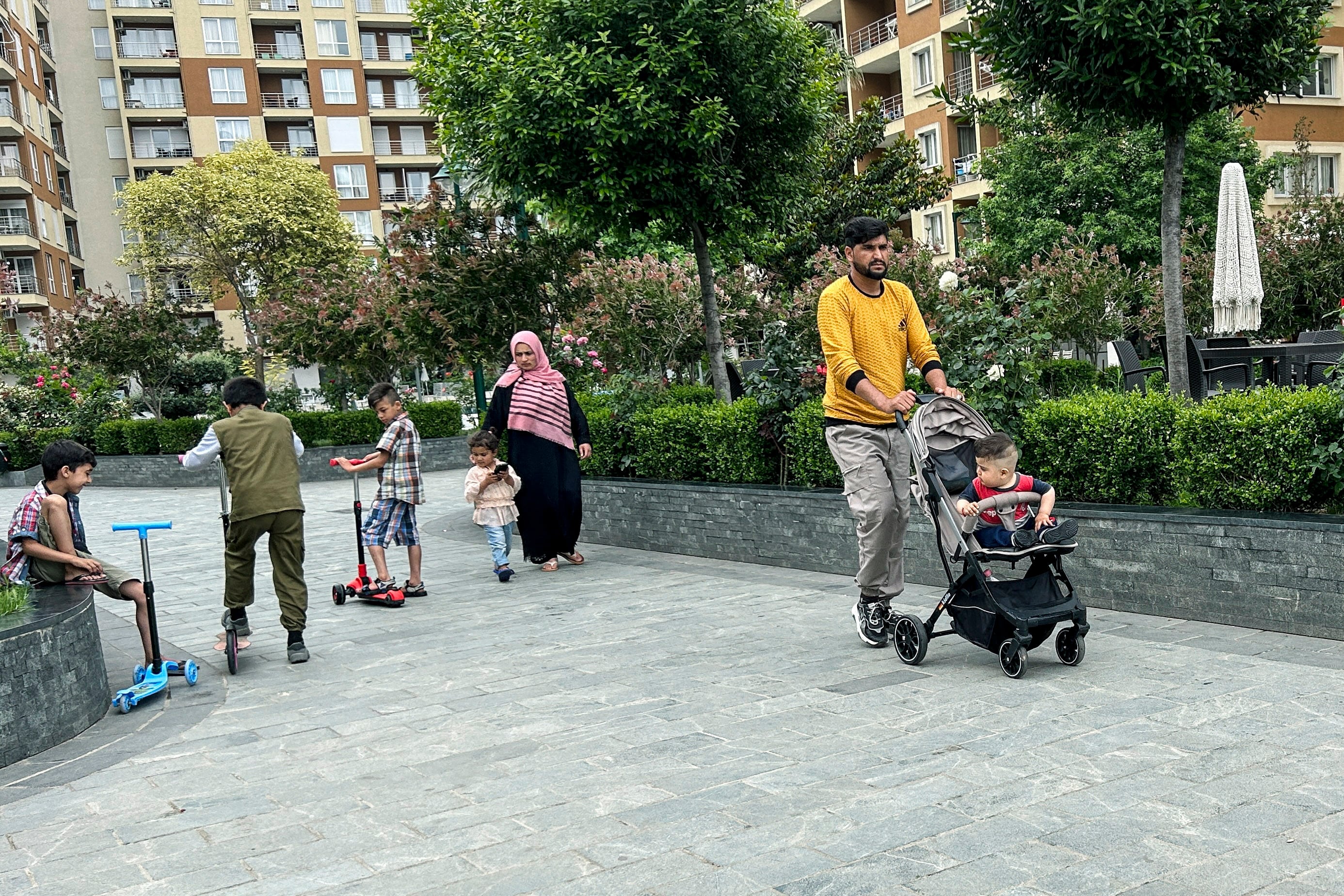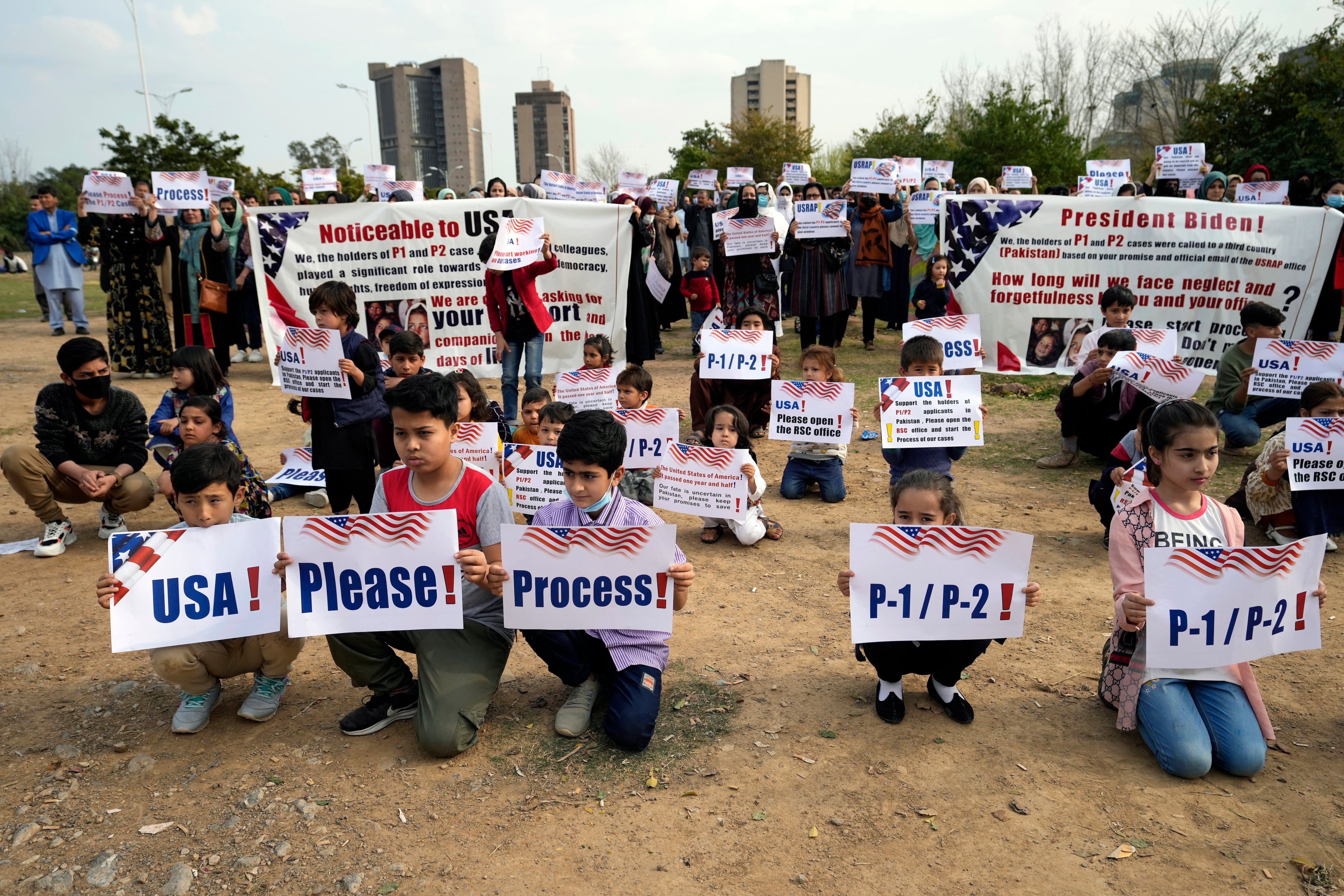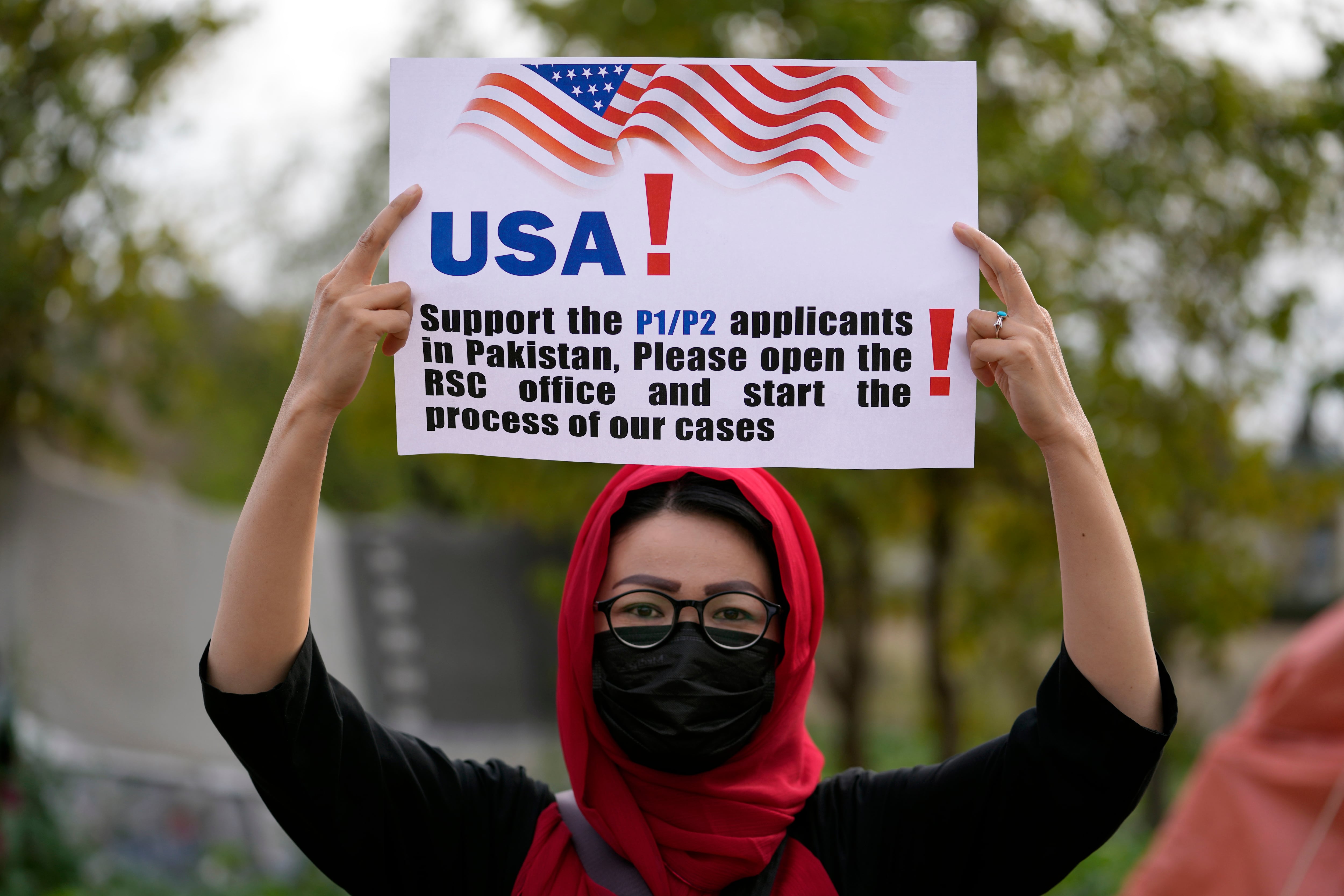ISLAMABAD — When the Taliban took control of Afghanistan, Shukria Sediqi knew her days in safety were numbered. As a journalist who advocated for women’s rights, she’d visited shelters and safe houses to talk to women who had fled abusive husbands. She went with them to court when they asked for a divorce.
According to the Taliban, who bar women from most public places, jobs and education, her work was immoral.
So when the Taliban swept into her hometown of Herat in western Afghanistan in August 2021 as the U.S. was pulling out of the country, she and her family fled, eventually making their way to Pakistan.
The goal? Resettling in the U.S. via an American government program set up to help Afghans at risk under the Taliban because of their work with the U.S. government, media and aid agencies.
But two years after the U.S. left Afghanistan, Sediqi and tens of thousands of others are still waiting. While there has been some recent progress, processing U.S. visas for Afghans has moved painfully slowly.
RELATED

Many of the applicants who fled Afghanistan are running through savings, living in limbo in exile. They worry that the U.S., which had promised so much, has forgotten them.
“What happens to my children? What happens to me?” Sediqi asked. “Nobody knows.”
During two decades in Afghanistan after its 2001 invasion, the U.S. relied on Afghans helping the U.S. government and military. Afghan journalists went to work at a growing number of media outlets. Afghans were the backbone of aid programs providing everything from food to tutoring.
Since 2009, the U.S. has had a special immigrant visa program to help Afghans like interpreters who worked directly with the U.S. government and the military.
Then, in the waning days of the U.S. presence in the country, the Biden administration created two new programs for refugees, expanding the number of Afghans who could apply to resettle in the U.S. The visas, known as P-1 and P-2, are for aid workers, journalists or others who didn’t work directly for the U.S. government but who helped promote goals like democracy and an independent media that put them at risk under the Taliban.
The American airlift in August 2021 carried more than 70,000 Afghans to safety, along with tens of thousands of Americans and citizens of other countries — plane after plane loaded with the lucky ones who managed to make their way through the massive crowds encircling Kabul airport.

But many more are still waiting. There are about 150,000 applicants to the special immigrant visa programs — not including family members. A report by the Association of Wartime Allies said at the current rate it would take 31 years to process them all.
Separately, there are 27,400 Afghans who are in the pipeline for the two refugee programs created in the waning days of the U.S. presence in Afghanistan, according to the State Department. That doesn’t include family members, which potentially adds tens of thousands more. But since the U.S. left Afghanistan it’s only admitted 6,862 Afghan refugees, mostly P-1 and P-2 visa applicants, according to State Department figures.
In June, U.S. Secretary of State Antony Blinken said the U.S. has relocated about 24,000 Afghans since September 2021, apparently referring to all the resettlement programs combined.
Among the refugee program applicants are about 200 Associated Press employees and their families, as well as staff of other American news organizations.
Krish O’Mara Vignarajah, president and CEO of the Lutheran Immigration and Refugee Service, said the U.S. refugee process in general can be agonizingly slow, and waits of as long as 10 years are common. Furthermore, former U.S. President Donald Trump gutted the refugee system.
Other challenges are unique to Afghan immigrants, said Vignarajah. Many Afghans destroyed documents during the Taliban takeover because they worried about reprisals. Now they need them to prove their case.
“The grim reality is that they’ll likely be waiting for years on end and often in extremely precarious situations,” Vignarajah said.
In a recent report, the Special Inspector General for Afghanistan Reconstruction, a body created by Congress to oversee government spending in Afghanistan, faulted the various resettlement programs set up for Afghans.
“Bureaucratic dysfunction and understaffing have undermined U.S. promises that these individuals would be protected in a timely manner, putting many thousands of Afghan allies at high risk,” the report said.
Many applicants ended up in Pakistan — one of the few countries that allows Afghans in — only to discover the U.S. was not processing refugee applications there. That changed late last month when the State Department said it would begin limited processing of applications in Pakistan.
The State Department declined an AP request for an interview but said in a statement it is committed to processing Afghan refugee visas. In June, Blinken applauded the efforts that have gone into helping Afghans resettle in America but emphasized the work continues.
At the same time, the Biden administration has made progress in recovering from the Trump-era curtailment of the refugee system with the number of refugees and Afghans admitted into the country increasing.
Left with little information, Afghans in Pakistan compare what they hear about their cases in group chats and organize social media protests demanding swifter U.S. action.
Enayatullah Omid and his wife are among those waiting.
In 2011, Omid started a radio station in Baghlan province with the help of the U.S.-based media training nonprofit Internews and funding from the U.S. Agency for International Development. He was the station’s general manager but did everything from reporting on-air to sweeping the floors at night.
When the Taliban entered Baghlan on Aug. 9, 2021, Omid said he did one last thing: He burned documents to keep the Taliban from identifying his staff. Then he and his wife fled.
They stayed at shelters arranged by a committee to protect Afghan journalists until the Taliban shut them down. Internews referred Omid to the U.S. refugee program in April 2022. Told he had to leave Afghanistan for his case to proceed, Omid and his wife went to Pakistan in July 2022.
Even in Pakistan Omid doesn’t feel safe. Worried about the Taliban’s reach, he’s moved three times. He said America has a saying: Leave no one behind.
“We want them to do it. It shouldn’t be only a saying for them,” he said.
Santana reported from Washington. AP reporters Munir Ahmed in Islamabad and Ellen Knickmeyer in Washington contributed.




